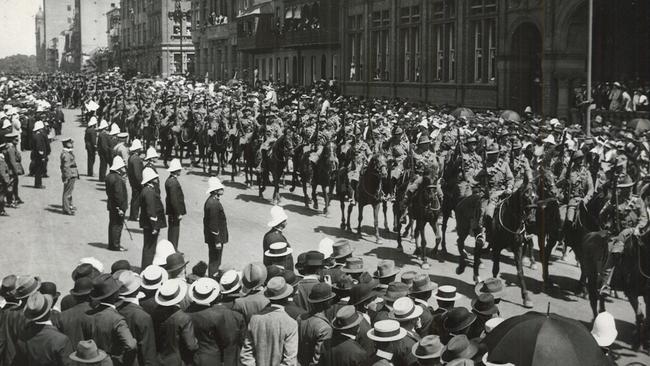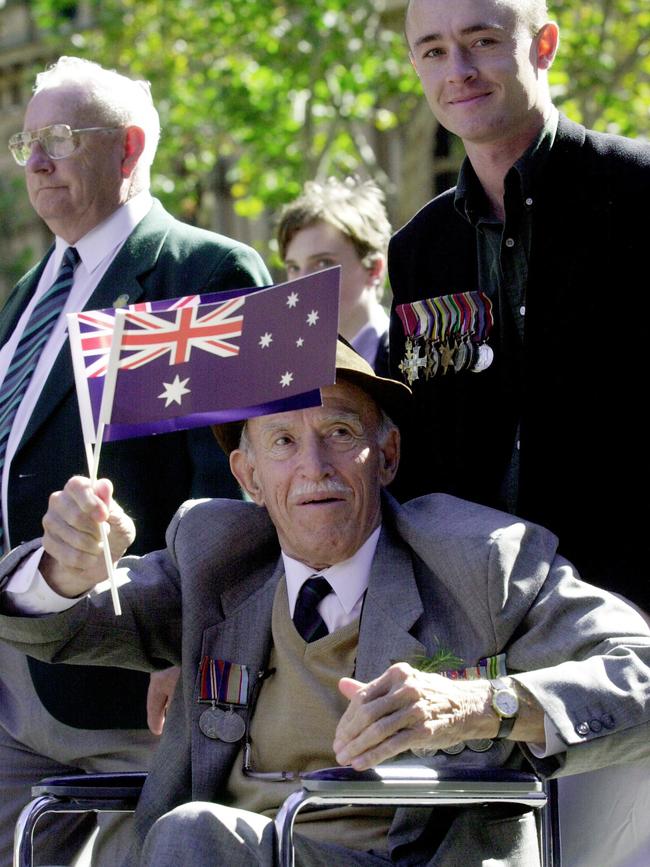
Like any country town, the list of the fallen shows family names repeated. In my neck of the woods, one family had to endure the loss of three of their sons, all killed in action on the Western Front. No Saving Private Ryan-type rescues were contemplated for the First AIF.
It’s difficult for Australians today to understand the real cost of what fleetingly became known as the war to end all wars. We had lost a generation of men, some killed on the battlefield, others returned home bearing the physical and psychological scars of the conflict. Just two decades old, the nation reeled from the trauma of war and the shock of it would carry on for another twenty years.
In 1914, Australia’s population had hit the four million mark. 416,809 Australians enlisted for service or almost 40 per cent of the male population aged between 18 and 44. 62,000 were killed in action, 167,000 were wounded, 87,865 died of illness including by the pneumonic influenza known as the Spanish flu pandemic which wrought havoc in the Western Front and quickly spread to major European cities where Australian servicemen crowded in temporary accommodation while waiting to be sent home and demobbed.

The Great War exacted a toll in every corner of the country. It was as if a giant wrecking ball had struck the nation. Vestiges of war were on every street corner. Sydney’s then focal point, Central Railway Station featured a cavalcade of men horribly disfigured by war eking out a living from handouts.
Crime rates, often a reflection of social discord, grew. Property crime rates remained low but crimes against the person – assaults, manslaughter and murder spiked to the highest numbers in our history. 106 years later there remains no parallel to the rates of violent offending in Australia in the 1920s.
Men were demobbed en masse and often allowed to return home with their service revolvers, some on occasions with their rifles. Many were psychologically damaged by war and became brooding presences in their homes.
Gun crime in NSW became such a concern that in 1924, the state government introduced legislation where anyone found to be in possession of an unlicensed firearm received a mandatory 12 month jail term. In the mother of all unintended consequences, men not keen to serve a year in the slammer reached instead for straight razors as their weapon of choice.
In studying the life of Sydney criminal John Frederick “Chow” Hayes, I learned that Hayes’s father had fought in World War I. Hayes, who was born in 1911, had only one memory of his father, an image of a man straight-jacketed and howling in a locked cell at the Callan Park Hospital for the Insane.
Shell-shocked by diagnosis then, or a case of traumatic shock or PTSD now. “Chow” Hayes was then just ten years of age.
Less than a decade later, the NSW Police Gazette described Hayes as a “gangster”, using the Americanism as a descriptor for the first time. Hayes who died in 1993 grimly acknowledged he had murdered six men in the course of his life.
Hayes was probably headed for a life of crime in any event but God only knows what the sight of his father deeply traumatised, bound and locked up would do to his son’s mental state.
There was a story told to me by an Australian history lecturer that the average height of Australian males declined in just six months. The initial group of volunteers ordered onto the beaches of Anzac Cove were required to be taller than 167.6 centimetres and aged between 18 and 35. With so many dead on the Western Front, these restrictions were loosened so that by 1917, those five feet tall and no older than 45 could enlist. The data, however, doesn’t support the historian’s words. The average height of the Australian male which had increased by almost one centimetre every decade from 1860 to 1910 due largely to a diet rich in red meat protein, did not grow at all in the following decade.
Australia’s public debt in 1914 was two per cent of gross domestic product. By war’s end, it was 50 per cent of the nation’s annual output, much of the debt incurred by way of loans to Britain’s independent banks. While there was economic growth in Australia in the first half of the 1920s, the world wool and wheat price went into free fall in the latter part of the decade and our highly protected economy slipped back.
After the Wall Street collapse in 1929, the US called in its war loans, many of whom sat with the British banks. The British bankers in turn called in their loans to Australia. War debt combined with loans for public works programs undertaken by the Bruce Government meant that Australia was perilously close to being unable to service its interest payments.

Sir Otto Niemayer, Director of the Bank England, visited Australia in July 1930 and hectored Australians for being too optimistic. Australians, he said, would have to “accept a lower standard of living.” We were living beyond our means, Niemayer admonished, in a fiscal fool’s paradise. He told the recently elected Scullin Government that it had two years to get its budget in order.
In a speech in the House of Commons in 1931, the Secretary of State for Dominion Affairs, James Thomas, wagged his finger at Australians: “At the time when arrangements were made for those advances His Majesty’s Government in the Commonwealth expressed the desire that Australia should bear the whole cost of its War effort.”
There was no debt forgiveness. Instead there was interest payment relief for just two years. When the Great Depression hit and official unemployment rates hit 25 per cent of the workforce (in reality it was closer to 50 per cent unemployed), the Australian government was unable to provide any meaningful financial support to workers and families.
The shadows of war would continue to drag the young nation backwards until another one came along.




The main street of my hometown closes for the dawn service every Anzac Day.